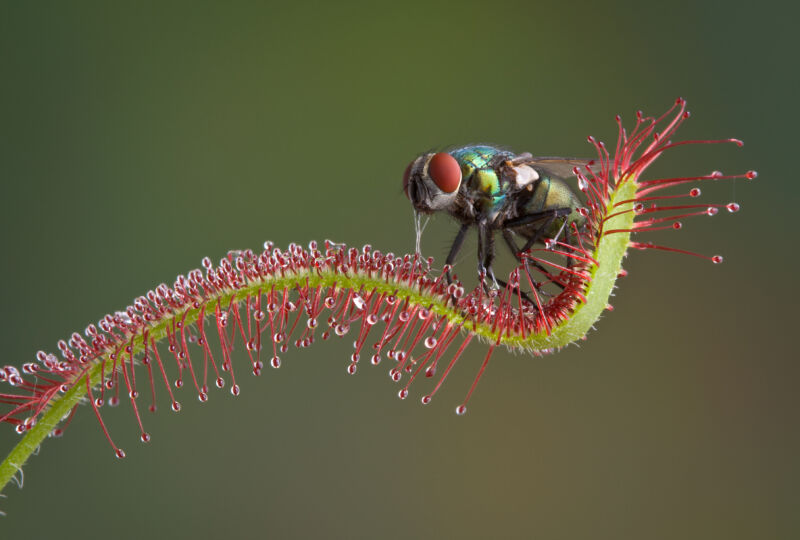
Enlarge / A blow fly trapped on a carnivorous sundew plant. (credit: Cathy Keifer | Getty)
Toward the end of the 19th century, lurid tales of killer plants began popping up everywhere. Terrible, tentacle-waving trees snatched and swallowed unwary travelers in far-off lands. Mad professors raised monstrous sundews and pitcher plants on raw steak until their ravenous creations turned and ate them too.
The young Arthur Conan Doyle stuck closer to the science in a yarn featuring everyone’s favorite flesh-eater, the Venus flytrap. Drawing on brand-new botanical revelations, he accurately described the two-lobed traps, the way they captured insects, and how thoroughly they digested their prey. But even his flytraps were improbably large, big enough to entomb and consume a human. Meat-eating, man-eating plants were having a moment, and for that you can thank Charles Darwin.
Until Darwin’s day, most people refused to believe that plants ate animals. It was against the natural order of things. Mobile animals did the eating; plants were food and couldn’t move—if they killed, it must only be in self-defense or by accident. Darwin spent 16 years performing meticulous experiments that proved otherwise. He showed that the leaves of some plants had been transformed into ingenious structures that not only trapped insects and other small creatures but also digested them and absorbed the nutrients released from their corpses.
No comments:
Post a Comment